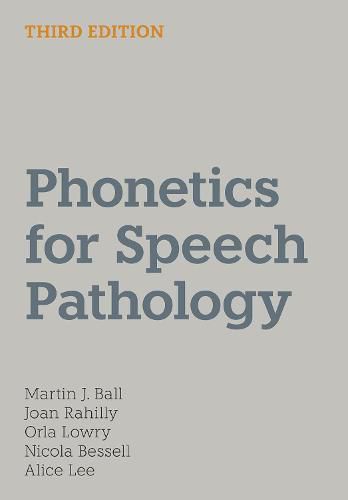Readings Newsletter
Become a Readings Member to make your shopping experience even easier.
Sign in or sign up for free!
You’re not far away from qualifying for FREE standard shipping within Australia
You’ve qualified for FREE standard shipping within Australia
The cart is loading…






The new, third, edition of this indispensable guide for speech pathology and therapy students is completely updated, applying the results of the most recent research into speech disorders.
Phonetics for Speech Pathology introduces normative aspects of phonetics and describes how these may go wrong in atypical speech, and the consequences when they do. The book deals with the three main areas of phonetics: articulatory, acoustic, and auditory, this last being often neglected in phonetics textbooks. The chapters are copiously illustrated, with most diagrams and figures newly drawn for this edition.
Correct use of phonetic symbolizations and the importance of adequate transcription in the clinic are stressed, as is the use of instrumental analyses to augment impressionistic descriptions of speech. A range of modern instrumental techniques in speech analysis is covered, as are developments in hearing research including auditory processing disorder. The book concludes with an introduction to current models of speech production and perception.
$9.00 standard shipping within Australia
FREE standard shipping within Australia for orders over $100.00
Express & International shipping calculated at checkout
The new, third, edition of this indispensable guide for speech pathology and therapy students is completely updated, applying the results of the most recent research into speech disorders.
Phonetics for Speech Pathology introduces normative aspects of phonetics and describes how these may go wrong in atypical speech, and the consequences when they do. The book deals with the three main areas of phonetics: articulatory, acoustic, and auditory, this last being often neglected in phonetics textbooks. The chapters are copiously illustrated, with most diagrams and figures newly drawn for this edition.
Correct use of phonetic symbolizations and the importance of adequate transcription in the clinic are stressed, as is the use of instrumental analyses to augment impressionistic descriptions of speech. A range of modern instrumental techniques in speech analysis is covered, as are developments in hearing research including auditory processing disorder. The book concludes with an introduction to current models of speech production and perception.